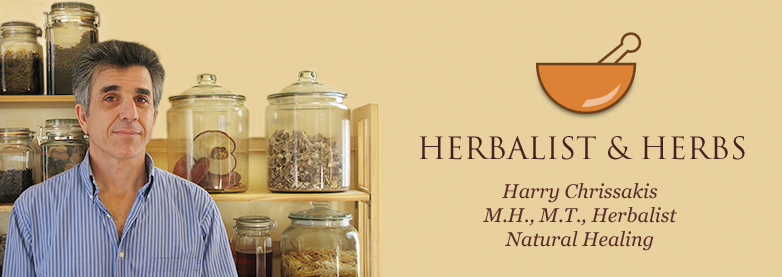by Harry Chrissakis Herbalist M.H. Natural Healing
HERBALIST AND HERBS
The under use of front line blood testing ( CBC, Lipid and Metabolic panels) may be cost saving, but it does not constitute good medicine. For contemporary westerners over 40, these tests should be run yearly. The reason being that the amount of information that theses 3 simple blood tests can yield is significant and can help to prevent problems before they penetrate deeply into our bodies (preventative medicine). These 3 tests can be done inexpensively through the online companies of Life Extension or Direct Labs ($35-$45) and you never have to see a doctor(these companies have DRs on staff, so everything is legal).
Putting the living, dynamic and fluid system of human physiology into the box of the static pharmaceutical drug model is a huge mistake, if that is all we are counting on. No doubt drugs can be excellent when applied to a model that is much closer to how things actually work. The “You got this red flag so you get this drug” idea of looking at blood tests is looking at an incomplete end game. Often one door leads to the next, if blood tests are seen in the light of a living system. The front line tests can lead you to greater specificity with more detailed testing, to determine who is actually at risk and why. But that only works if the connection between cause and effect is clear. A more holistic approach offers that without ever deviating from the science of physiology. Traditional medicines look at patterns expressing themselves within the body. Looking at blood tests from the perspective of high and/or low normal in multiple areas is indicative of those very same patterns. It does not have to show as a flag in order to be indicating a problem. Once again, further testing may be necessary.
As an example, let’s look at a really common problem in the U.S. It is estimated that about 80 million people have Insulin Resistance. This is also known as the pre-diabetic condition. Amongst other problems, insulin resistance is extremely damaging to our vascular system and is one of main contributing factors in both heart disease and stroke (Number 1 and 3 killers in the U.S.).
Example: A person takes these 3 tests and what show is this; Blood Glucose 100 (Range is 70-100),Triglycerides 140 (range 0-149), Platelets 370 (range 155-379), HDL 40 (range- above> 39), LDL 99 (range 0-99). All 5 numbers are within range, when in fact this person may already be insulin resistant. In my opinion, and that of many excellent researchers, is that when glucose begins to climb above 90 we are getting into problems. As numbers rise in this area, the negative effects are not additive but multiplicative. Glucose numbers alone cannot tell you how hard the body is working to maintain that number. To find that out, fasting insulin and HbA1c would need to be looked at. If those numbers are high (even high normal) than there is a very good chance that both insulin and glucose are maintaining dangerously high levels in our blood stream. Both excess and sustained levels of insulin and glucose will produce pretty severe vascular damage in the long term. High and sustained insulin levels also acts as a growth factor for cancer.
When our bodies become insulin resistant, the pancreas over produces insulin to force excess sugars out of the blood stream and into the cells. If the cells cannot use the glucose, it will convert it into triglycerides and pump them back out into the blood stream (thus elevated triglycerides as I indicator of insulin resistance). Excess and sustained insulin can encourage the overproduction of platelets as well as depress HDL and increase LDL. Both excess and sustained insulin and glucose are pro inflammatory. Inflammation is at the heart of many major disease processes. The test to determine if there is hyper inflammation in the blood stream is C-Reactive Protein. Often the source of that inflammation is insulin resistance. Backup determinate is the SED rate. To get this closer to completion, a full thyroid and hormone panel are necessary. The reason being, that if testosterone is low in men and/or thyroid is depressed in men or women it can set the stage for insulin resistance. If this is not checked for and addressed then all other efforts to reduce insulin resistance will be compromised.
If we wanted to go further into the vascular system a NMR or VAP test would yield a lot more detailed info and give the ability to focus on just what is the problem. Testing also has this value; setting base line, then retesting to see if a protocol is actually working.
Let’s take an individual marker LDH. Lactate D Hydrogenase . LDH is elevated for only a few reasons. 1.The rapid production of white blood cells, 2.Damaged red blood cells, 3.Cancer. LDH is also a good marker to monitor an established cancer. LDH will go up temporarily in athletes who have just worked out hard.
I do not use blood test or any other test to diagnosis. That’s the Dr’s job. I do look for patterns that can show how the body is getting in trouble and if there is a diagnosis (by an M.D.) that the body is healing or going deeper into the established problem.
Harry Chrissakis
Herbalist, M.H. Natural Healing
Herbalist and Herbs.com
530-933-8244
